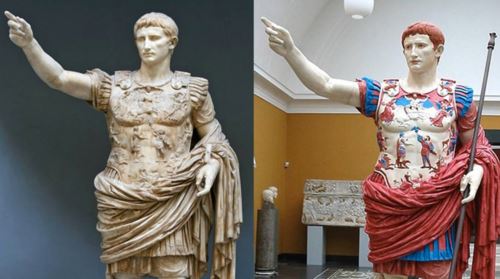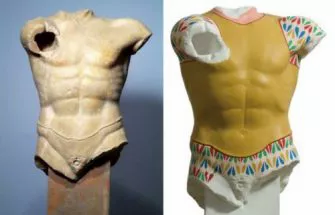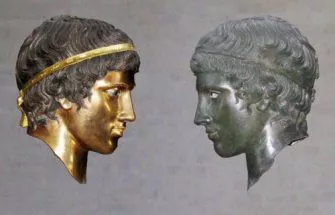The Colours Of Ancient Rome
- Roma Experience
- Feb 22, 2024
- 2 min read
Updated: Mar 6, 2024
Far from being monochrome, Roman statues seem to have been brightly painted and adorned with decorations and jewels, just like their Greek predecessors. This revelation is shocking, and maybe even a little upsetting, if you’ve grown up with the idea of Ancient Rome being full of elegant white statues. The garish colours of the reconstructions may seem less aesthetically pleasing than the white marble on display in the Vatican Museums.
Far from being monochrome, Roman statues seem to have been brightly painted and adorned with decorations and jewels, just like their Greek predecessors. This revelation is shocking, and maybe even a little upsetting, if you’ve grown up with the idea of Ancient Rome being full of elegant white statues. The garish colours of the reconstructions may seem less aesthetically pleasing than the white marble on display in the Vatican Museums.

Laocoon, a masterpiece of Roman statuary that now has pride of place at the Vatican. By the 16th century any trace of colour was long gone, and the artists who found inspiration in ancient artworks would have assumed, as we once did, that these statues were always white. If Michelangelo had known that they were originally coloured, this knowledge may well have transformed his own art, and in turn changed the “classical aesthetic” that dominated Western art ever since.
You might think that we know all there is to know about the ancient world. But as archaeologists and scientists continue to uncover hidden layers of paintings, or discover the secret colours of ancient statues, it’s clear that that isn’t the case. History is not a closed book, but a scroll that continues to unwind over the centuries. To learn about fascinating new discoveries and have your preconceptions of history radically challenged, join our Rome tours. With the help of our expert guides, you’ll see the past in a new light – and new colours.








